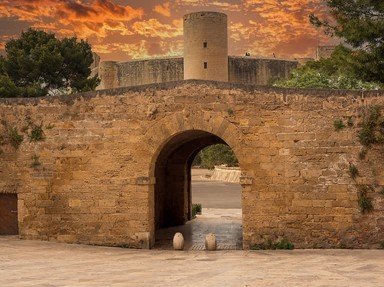Quiz Answer Key and Fun Facts
1. The Great Wall of China started life as a series of walls between the borders of neighboring states. What was the name of the first Emperor of China, who reorganised some existing walls to focus on defining the borders of the country and removed domestic dividing portions?
2. These are the ruins of a walled city known as Great Zimbabwe, located in (wait for it) Zimbabwe. The word 'zimbabwe' is thought to be derived from the Shona word 'dzimba', which has which of these meanings?
3. This stretch of wall, often called the Wailing Wall, is a portion of the retaining wall built around Temple Mount during the expansion of the Second Jewish Temple during the time of Herod the Great. It is considered by Jews to be the most sacred of the four sides because it is the closest to the site of the First Temple. By what other name is it commonly called?
4. To what country will you need to travel to see the Walls of Ston, a Dalmatian fortification in the shape of an irregular pentangle?
5. In 2000, the Israeli government started construction of the West Bank barrier wall, intended to reduce terrorist attacks from Palestinians protesting what they see as invasion of their land. Its path partially follows the line of demarcation for Israel's border set out in 1949, which was given which colorful name?
6. This is a picture of the remains of the Ishtar Gate, which was once part of the defensive walls around a city where Nebuchadnezzar is said to have also constructed fabulous gardens for his homesick wife. Which ancient city, whose ruins can be found in modern Iraq, was this?
7. Trekking over to Turkey, we can see the remains of a walled city whose defensive walls played a significant role in Homer's epic poem 'Iliad'. What is the name of this ancient city?
8. This 20th century wall lasted for a far shorter period of time than most of those featured in this quiz. It was erected in 1961, upgraded for the fourth time in 1975 to its final form, and destroyed between 1989 and 1992. In which city was it located?
9. The Romans were great builders, of roads, aqueducts, and walls. Hadrian's Wall, built to mark the northern boundary claimed by the Roman Empire, was built around 122-128 CE. Does it mark the border between England and Scotland?
10. Our tour only includes one wall from the western side of the Atlantic Ocean, although there are many more that could have been included. Sacsayhuaman was a citadel started around 1100, and developed more fully by the Incas starting in the 13th century. It is located in the northern suburbs of which South American city?
Source: Author
looney_tunes
This quiz was reviewed by FunTrivia editor
stedman before going online.
Any errors found in FunTrivia content are routinely corrected through our feedback system.
